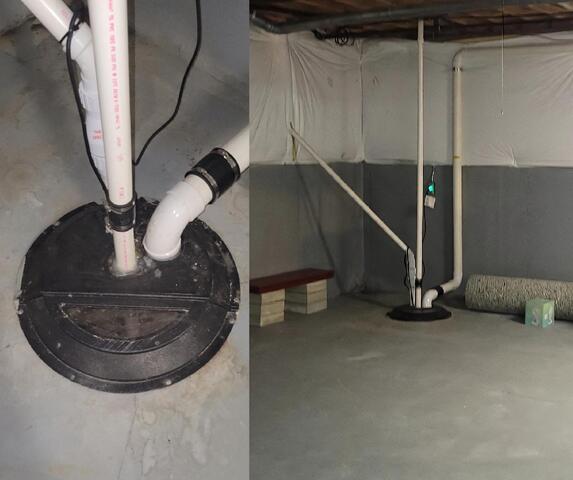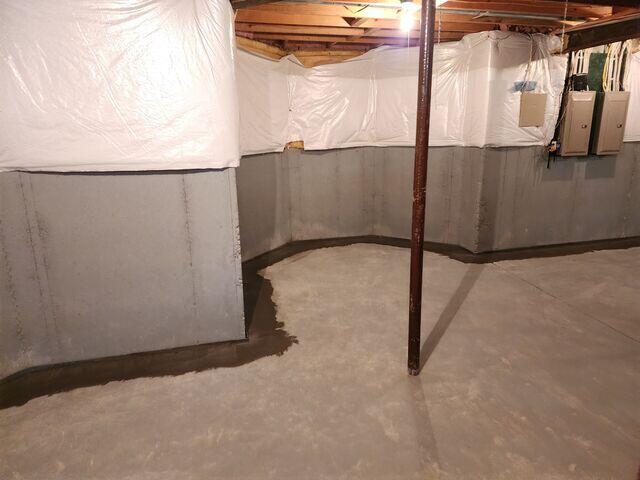Waterproofing a Basement with an Existing Radon Mitigation System
Challenge
This home in Middletown, OH, had a radon mitigation system tied into its existing sump pump - a common practice since the sump pit and drain tile network provide an effective depressurization pathway. Radon gas that rises from the soil is collected in the pit and exhausted outside by a powerful fan, keeping the home safe.
While the radon system itself was working well, the sump pump wasn’t moving water away quickly enough. Excess water around the pit can interfere with the mitigation fan and place pressure on the finished basement floor. Over time, that pressure can even cause floor cracks, creating new entry points for radon gas.
The homeowner understood how closely water management and radon control are connected, and they trusted us to make sure both systems worked together effectively.
Solution
We started by installing a full interior perimeter waterproofing system, but with a bit of a twist. instead of our normal WaterGuard, we installed our radon WaterGuard drains. These drains are very similar to our normal WaterGuard drains, but they are sealed at their wall flanges with foam stripping. This way, water that drips from the walls can enter the drainage system, while also keeping the bad air underneath the floor. Having a good radon mitigation system like this one won't let air bypass the foam strip because the air pressure from the fan won't let the air sit around for too long. Our WaterGuard drains also have airtight service ports, which will allow us to run some tests and clean the system upon our service visits.
Now that we installed the special WaterGuard drains, it was time for everything else. We started by hooking the drains up to our TripleSafe sump pump - which comes with an UltraSump 4 battery backup system. We also attached two discharge lines from the sump pump to a safe place away from the outside of the home. It's important to note that we didn't need a special sump for the radon system because all of ours are already air tight (and have an airtight floor drain).
In the end, the customer let out a big sigh of relief knowing that water can't compromise their radon mitigation system due to inefficiencies from their older existing sump pump & drainage systems any longer. They also feel confident in their basements floor pressure being relieved, which will prevent cracks from forming.








